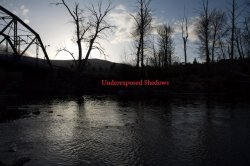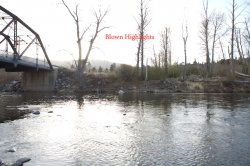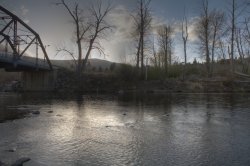That's heavily dependent on the color gamut and dynamic range of your output medium, as well as what file format you can get to the output medium with. If you're printing from a TIFF onto a relatively high-range medium then you're likely to see a tonal graduation difference at both ends of the spectrum
versus an 8-bit JPEG file. A screen really isn't the "right" way to critically view an image, as it's very limiting.
It's not all that amazing. People have started to wax philosophically, but we're at the point where digital sensors are getting to about the same as color print film and with HDR you can reproduce the dynamic range of most B&W film. Shooting digital is like shooting positives, you expose for the highlights and let the shadows fall where they may, but you get back shadow detail with HDR- all the tweaking happens in PS, but there's a lot of room in an raw file for tweaking too.
I think a lot of the issue is that people are comparing analog prints to what they see on a monitor, not to analog prints- and that'll always foul things up.
If you look at sites like:
http://www.dantestella.com/technical/dynamic.html
You'll see 9.5 stops of DR for the good (old) D2x, if you do a full auto-bracket at 1 stop increments, you'll get seven additional stops of data, putting you at 16.5 stops. That's only half a stop under the TMax 100 DR, while the base is over Kodachrome 25. Without an iris change, your eye is at 7 stops- since an image isn't just about contrast range, and since digital doesn't shoulder and toe like reversal film, you can't do a pure apples-to-apples comparison, but digital compares very favorably overall and the post-shooting manipulation is *so much easier* too! Not to mention the fumes, chemical disposal...
Frankly though, the other piece of the puzzle is flexibility. If you look at the following link:
http://www.imaging-resource.com/PRODS/D2XS/D2XSIMATEST.HTM
They're touting acceptable 13x19 prints at ISO 1600 from a D2xs- which if you listen to the measurebators, is completely unacceptable past ISO 400. To get a clean 11x14 off of print film from a 35mm sized body at ISO 1600 wasn't all that easy. Heck, I rarely shot 645 above a base ISO of 800 (Ilford Delta 3200 at its "natural" ISO processed in PMK was my usual "high speed" B&W solution, 645 if I could, otherwise in 4x5.)
While we're not quite at parity with B&W, the only place you really lose with digital is against alternative processes. In color though, I think it's at least parity- I've got 16x24s hanging on the office wall that have incredible detail, I can't remember ever wanting to go above 11x14 from small-format positive or reversal film.












